How does housing affect living standards in the UK?
As well as being most families' largest expense, the affordability, availability and quality of housing are all important.
Take a look at our indicators to find out what's happening today👇
buff.ly/8BgCmui
05.08.2025 11:23 — 👍 2 🔁 5 💬 0 📌 0
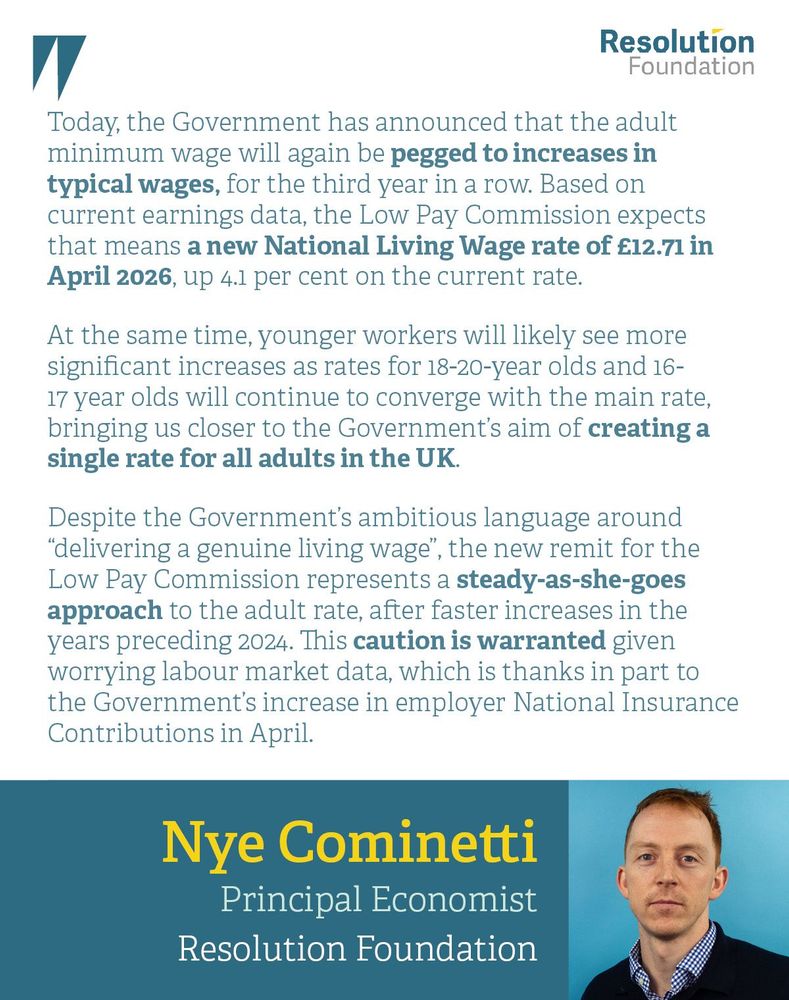
“Today, the Government has announced that the adult minimum wage will again be pegged to increases in typical wages, for the third year in a row. Based on current earnings data, the Low Pay Commission expects that means a new National Living Wage rate of £12.71 in April 2026, up 4.1 per cent on the current rate.
“At the same time, younger workers will likely see more significant increases as rates for 18-20-year olds and 16-17 year olds will continue to converge with the main rate, bringing us closer to the Government’s aim of creating a single rate for all adults in the UK.
“Despite the Government’s ambitious language around “delivering a genuine living wage”, the new remit for the Low Pay Commission represents a steady-as-she-goes approach to the adult rate, after faster increases in the years preceding 2024. This caution is warranted given worrying labour market data, which is thanks in part to the Government’s increase in employer National Insurance Contributions in April.”
Despite ambitious language, the Government is continuing its cautious approach to uprating the minimum wage.
As a result, the Low Pay Commission expects a new National Living Wage rate of £12.71 in April 2026, up 4.1 per cent on the current rate.
Learn more ⤵️ buff.ly/JUEHl7t
05.08.2025 10:38 — 👍 2 🔁 0 💬 0 📌 0
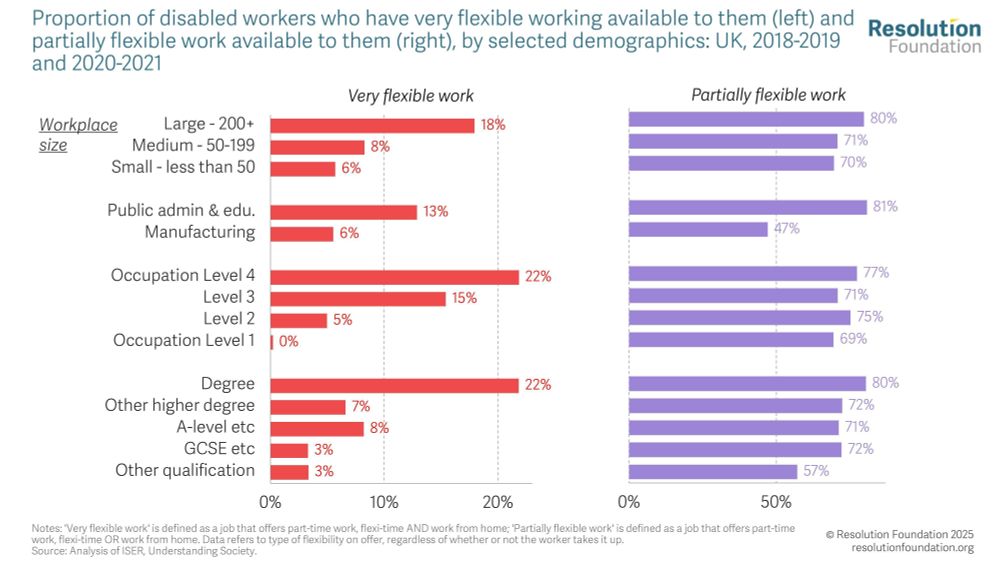
chart showing Proportion of disabled workers who have very flexible working available to them (left) and partially flexible work available to them (right), by selected demographics: UK, 2018-2019 and 2020-2021
Disabled people’s access to flexible work is not evenly spread.
There is significant variation by workplace size, sector and education level.
Read 'Opening doors' now ⤵️ buff.ly/rbbUE9I
05.08.2025 10:23 — 👍 2 🔁 2 💬 0 📌 0
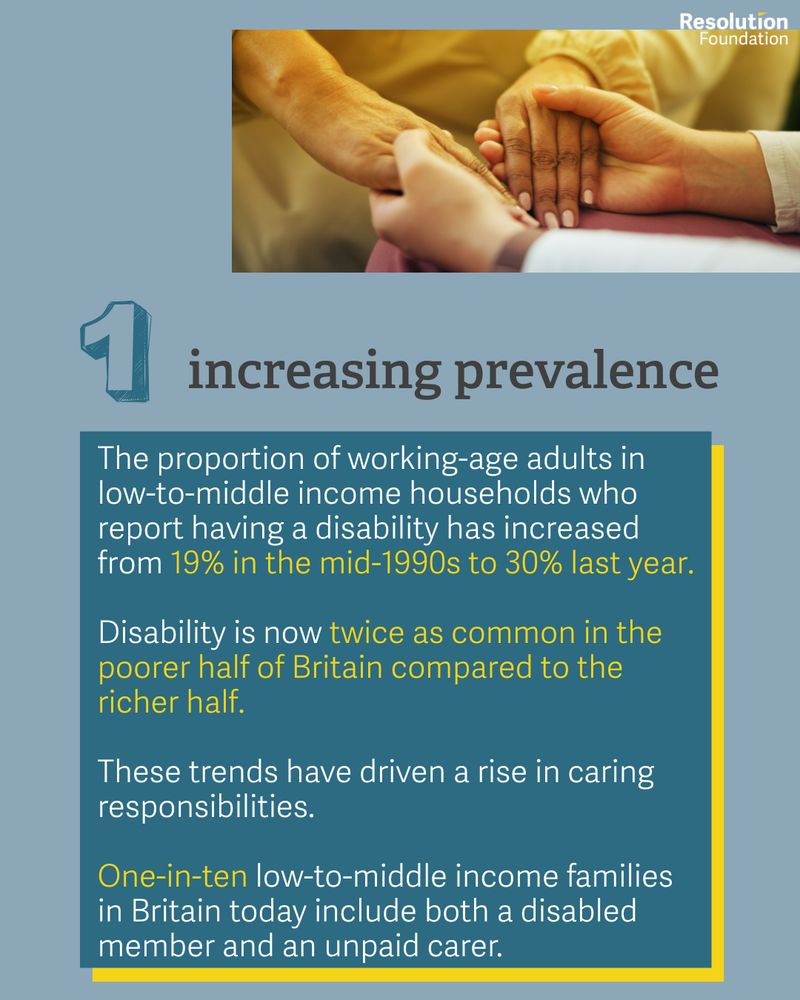
The proportion of working-age adults in low-to-middle income households who report having a disability has increased from 19% in the mid-1990s to 30% last year.
Disability is now twice as common in the poorer half of Britain compared to the richer half.
These trends have driven a rise in caring responsibilities.
One-in-ten low-to-middle income families in Britain today include both a disabled member and an unpaid carer.
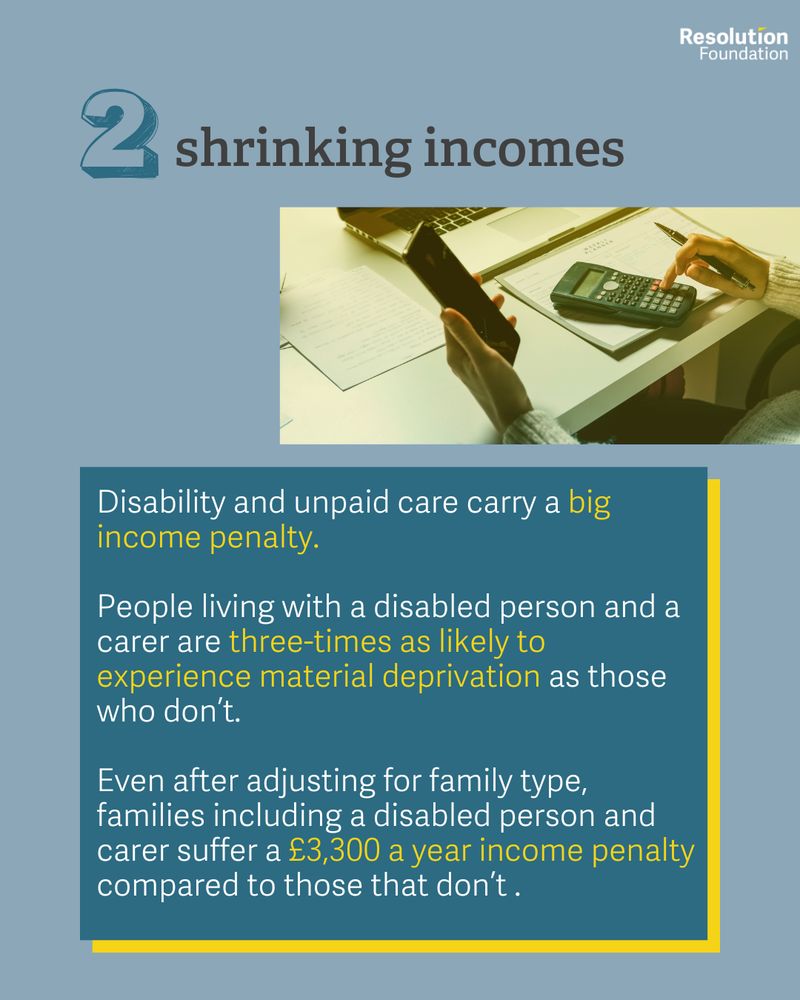
Disability and unpaid care carry a big income penalty.
People living with a disabled person and a carer are three-times as likely to experience material deprivation as those who don’t.
Even after adjusting for family type, families including a disabled person and carer suffer a £3,300 a year income penalty compared to those that don’t .
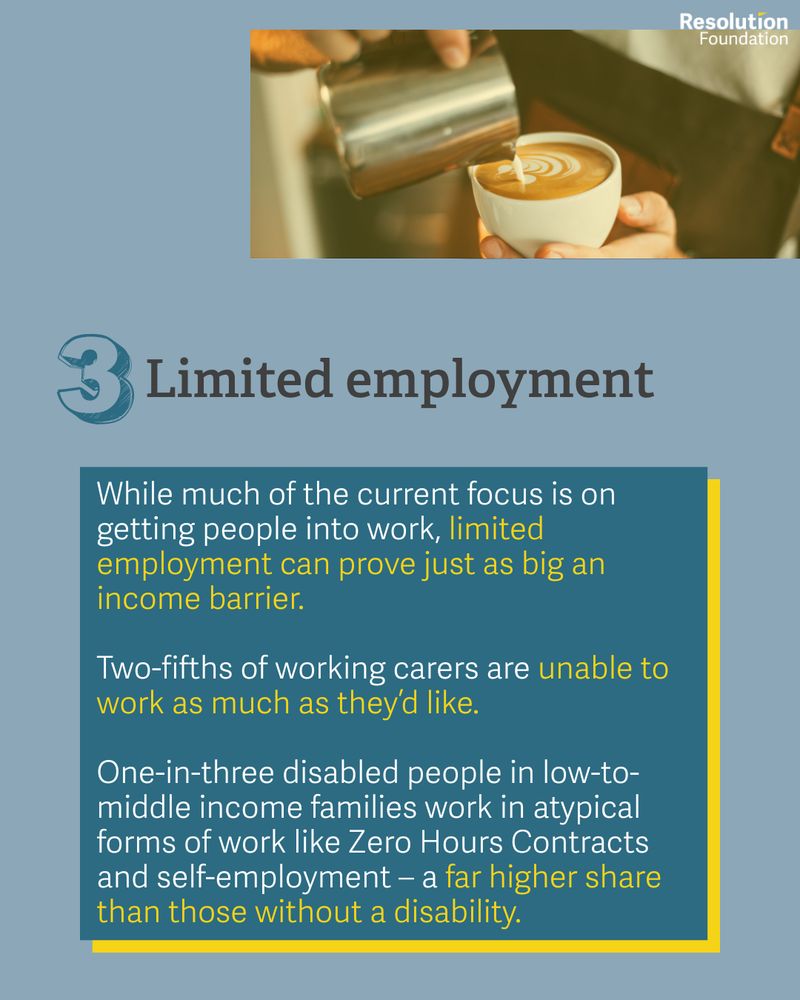
While much of the current focus is on getting people into work, limited employment can prove just as big an income barrier.
Two-fifths of working carers are unable to work as much as they’d like.
One-in-three disabled people in low-to-middle income families work in atypical forms of work like Zero Hours Contracts and self-employment – a far higher share than those without a disability.
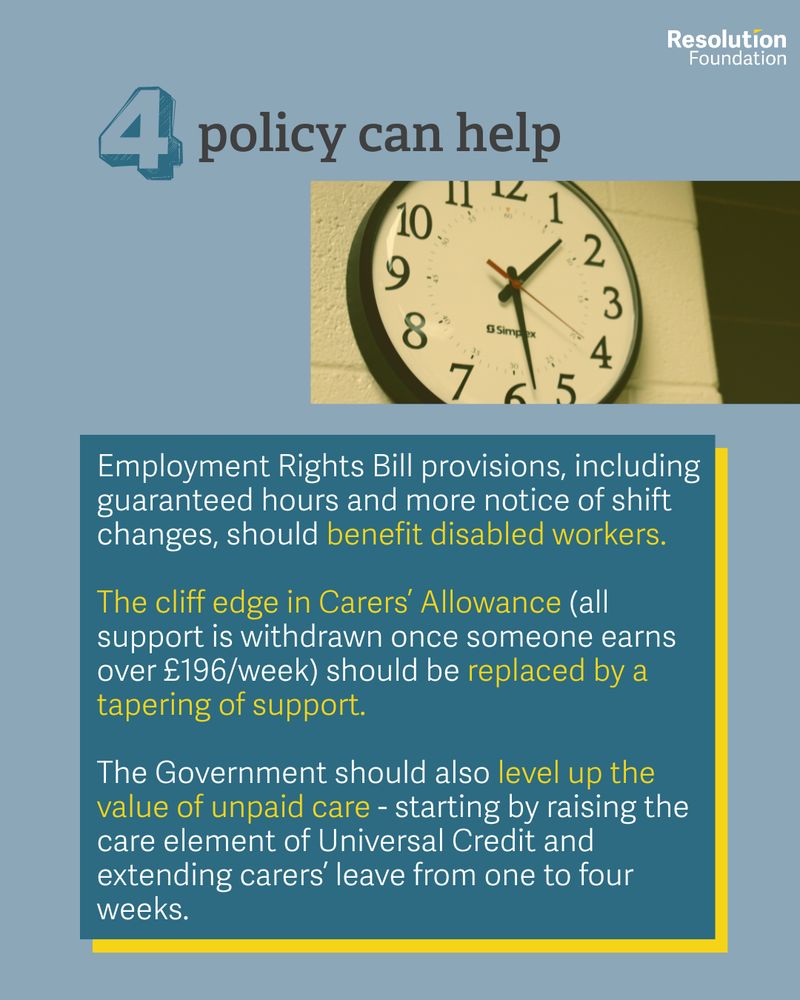
Employment Rights Bill provisions, including guaranteed hours and more notice of shift changes, should benefit disabled workers.
The cliff edge in Carers’ Allowance (all support is withdrawn once someone earns over £196/week) should be replaced by a tapering of support.
The Government should also level up the value of unpaid care - starting by raising the care element of Universal Credit and extending carers’ leave from one to four weeks.
How do disabilities and caring responsibilities affect British families?
Read 'Don't forget about us' to learn more ➡️ buff.ly/kNMSUQa
05.08.2025 09:23 — 👍 4 🔁 1 💬 1 📌 0
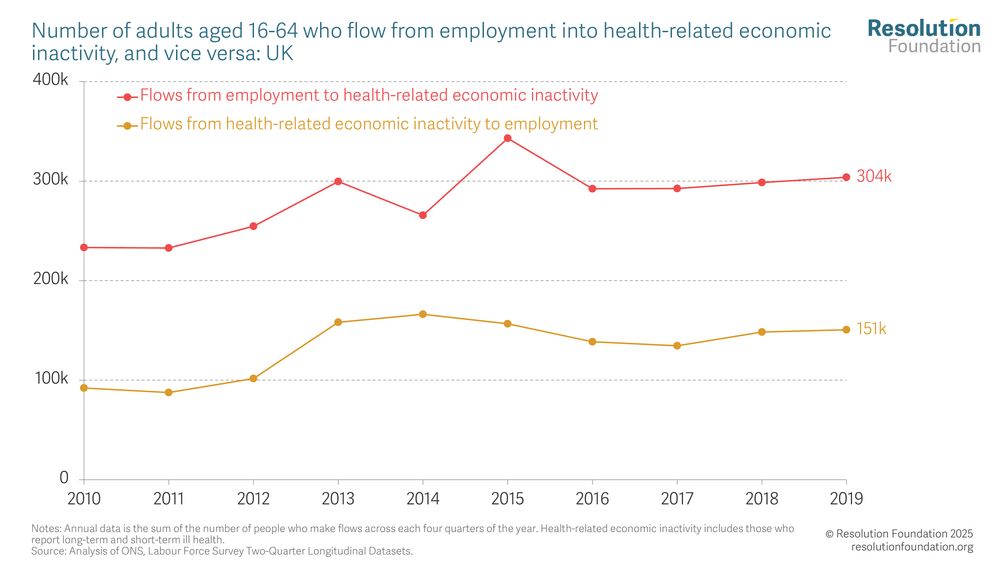
Chart showing Number of adults aged 16-64 who flow from employment into health-related economic inactivity, and vice versa: UK
Each year, more than twice as many people move from employment to health-related inactivity compared to moving the other way.
Read 'Opening doors' now, to learn how employers can create more opportunities for disabled workers 👉 buff.ly/d9KvJpj
05.08.2025 08:22 — 👍 8 🔁 3 💬 0 📌 0
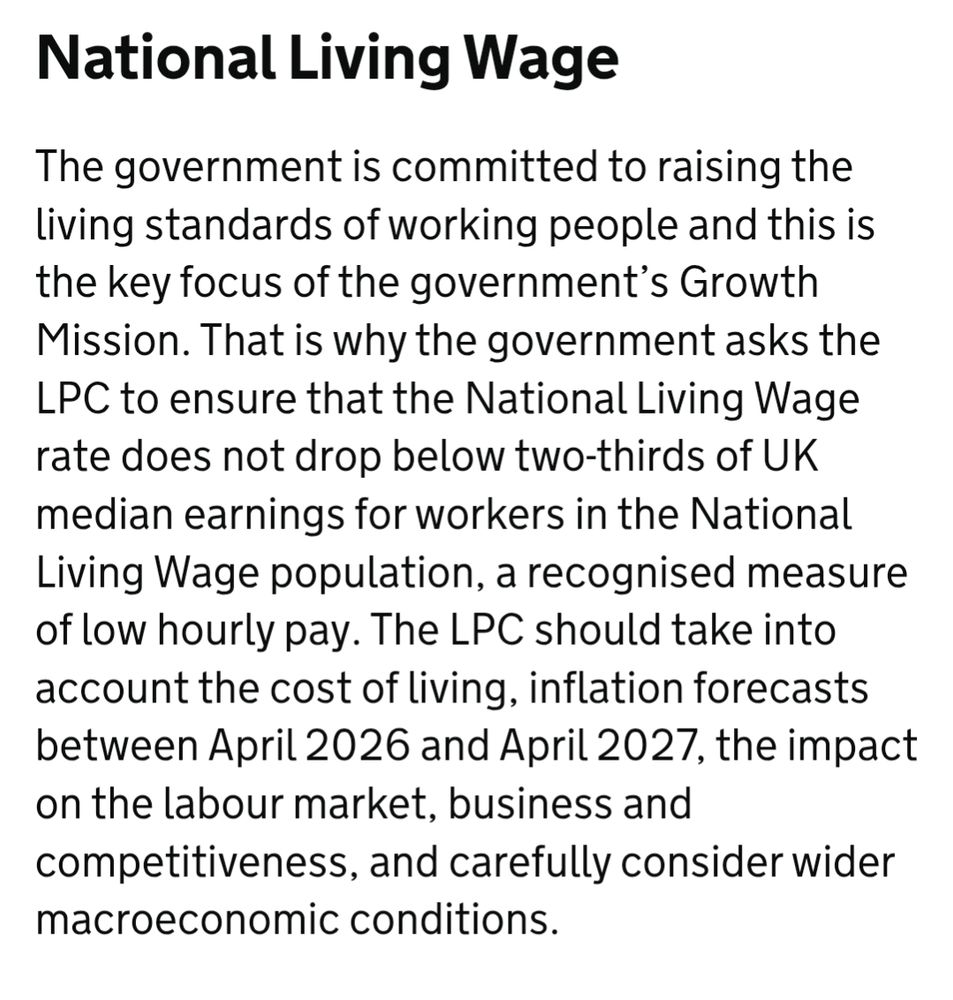
Minimum wage remit for 2026 now published. As expected, it's mostly a rollover of last year's policy.
1. Adult rate "not to fall below 2/3 median wages" i.e. in practice this means rise in line with forecast average earnings (will have a look at the likely rate later)
05.08.2025 06:22 — 👍 6 🔁 7 💬 3 📌 0
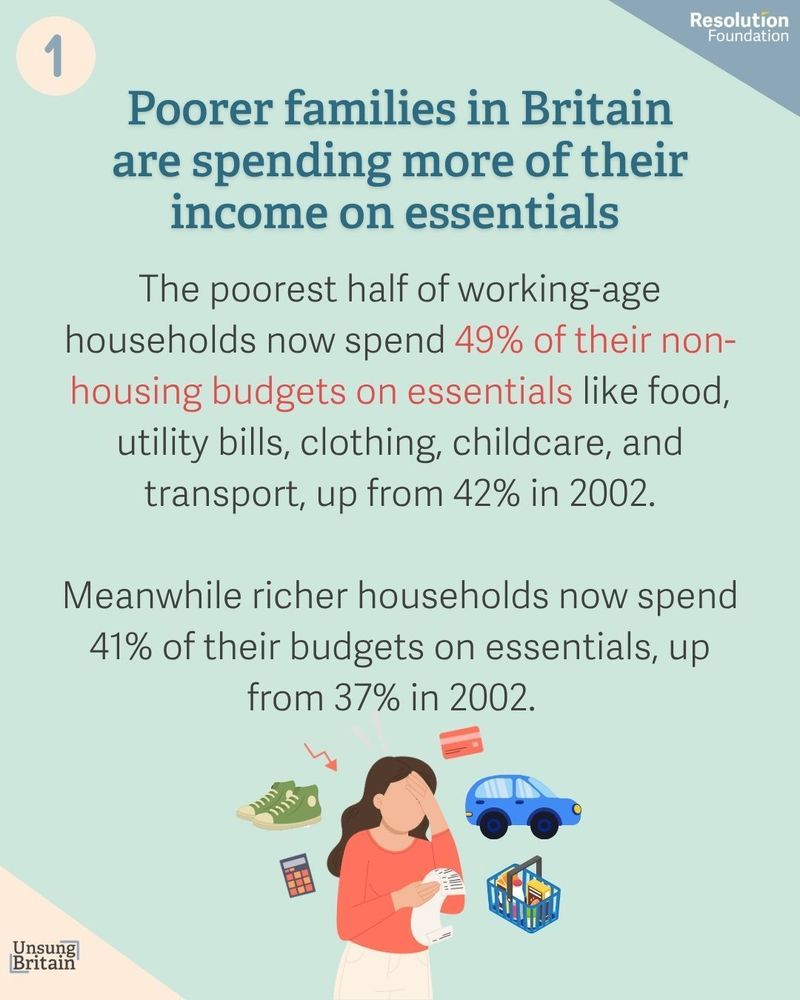
Poorer families in Britain are spending more of their income on essentials
The poorest half of working-age households now spend 49% of their non-housing budgets on essentials like food, utility bills, clothing, childcare, and transport, up from 42% in 2002.
Meanwhile richer households now spend 41% of their budgets on essentials, up from 37% in 2002.
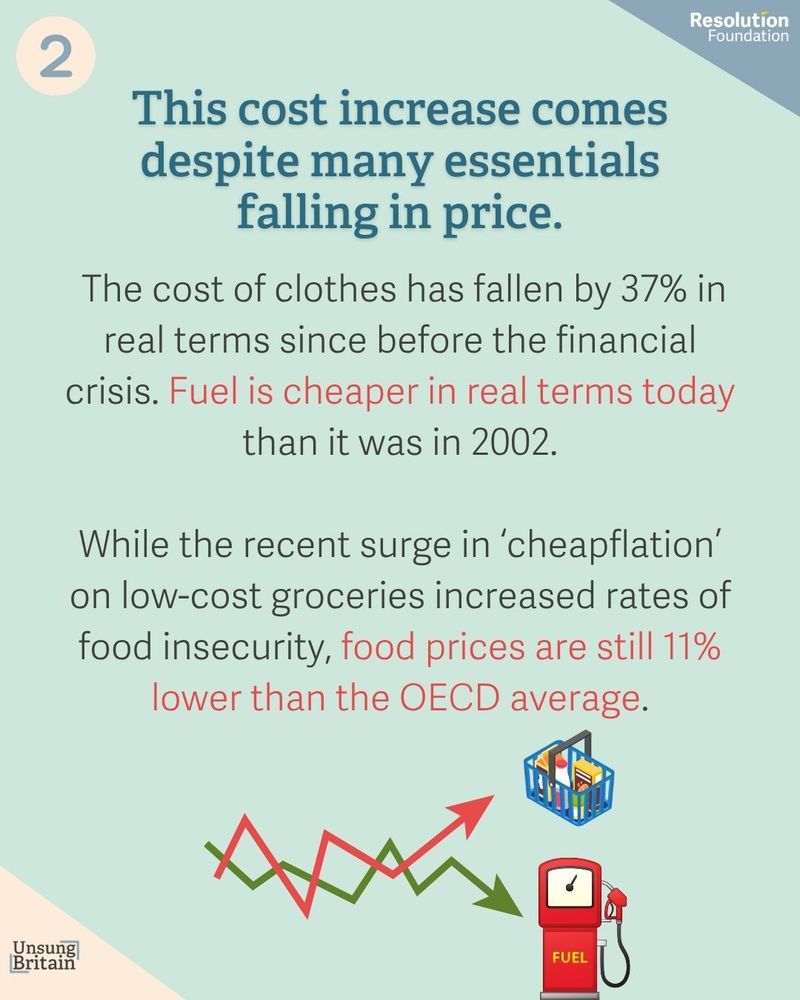
This cost increase comes despite many essentials falling in price.
The cost of clothes has fallen by 37% in real terms since before the financial crisis. Fuel is cheaper in real terms today than it was in 2002.
While the recent surge in ‘cheapflation’ on low-cost groceries increased rates of food insecurity, food prices are still 11% lower than the OECD average.

But energy costs have skyrocketed.
Between 2000 and 2019, the cost of gas and electricity doubled in real terms. These costs shot up further between 2019 and 2023, with annual bills rising from £1,200 to £2,051.
While energy prices have come down from the 2023 peak, total household energy debt has more than doubled, from £1.6 billion in Q4 2019 to £3.9 billion in Q4 2024.

A social tariff could help struggling families with energy bills.
Offering a 10% tariff discount to the poorest two-fifths of households in England and Wales would cost £1.6 billion.
This the same as the expected cost of the re-introduce Winter Fuel Payments, but better targeted at those who need help the most.
Low-to-middle income families have been experiencing a 'comfort crunch', as they now spend more of their budgets on essentials, especially energy and food.
Read more 👉 buff.ly/fCKt988
04.08.2025 16:37 — 👍 6 🔁 4 💬 1 📌 0
The dominance of energy bills in driving inflation in recent years has meant that poorer households have faced signifcantly higher inflation than richer households.
Lalitha Try explains ⤵️
04.08.2025 15:41 — 👍 5 🔁 7 💬 1 📌 0
While household income growth was strong in 2024, we haven't seen any growth in living standards since 2019, due in part to the cost of living crisis.
04.08.2025 14:38 — 👍 3 🔁 0 💬 0 📌 0
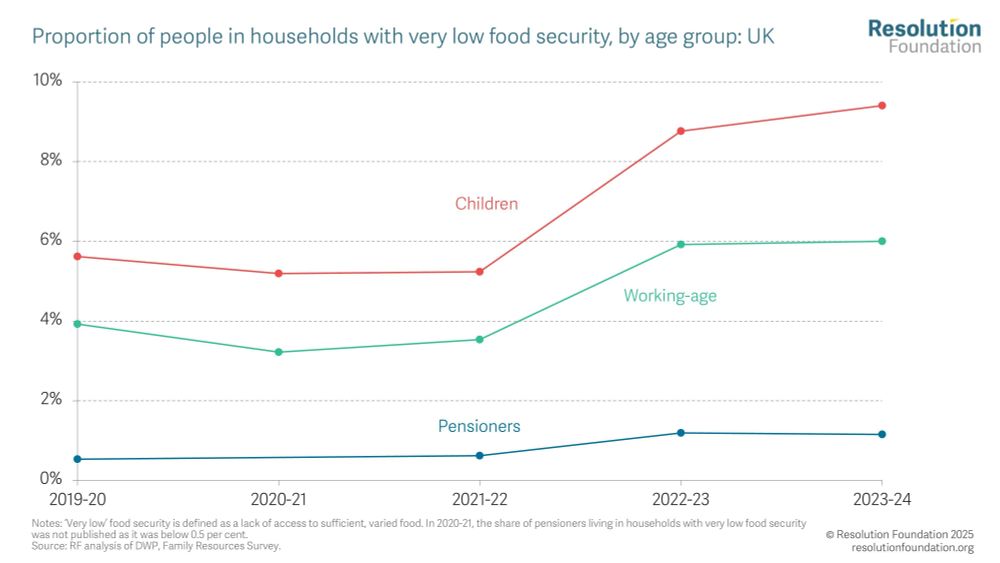
Chart showing the proportion of people in households with very low food security, by age group: UK
The proportion of working-age adults living in households with ‘very low’ food security (i.e. where there is a lack of sufficient, varied food) shot up from 3.9 to 6.0 per cent between 2020-21 and 2023-24 (after remaining broadly flat through the pandemic), while the proportion of very food-insecure children rose from 5.6 to 9.4 per cent.
Following sharp rises in food inflation in 2023, food insecurity in the UK has soared.
The proportion of children living in households with ‘very low’ food security shot up from 5.6% to 9.4%t between 2020-21 and 2023-24.
04.08.2025 13:39 — 👍 7 🔁 5 💬 0 📌 3
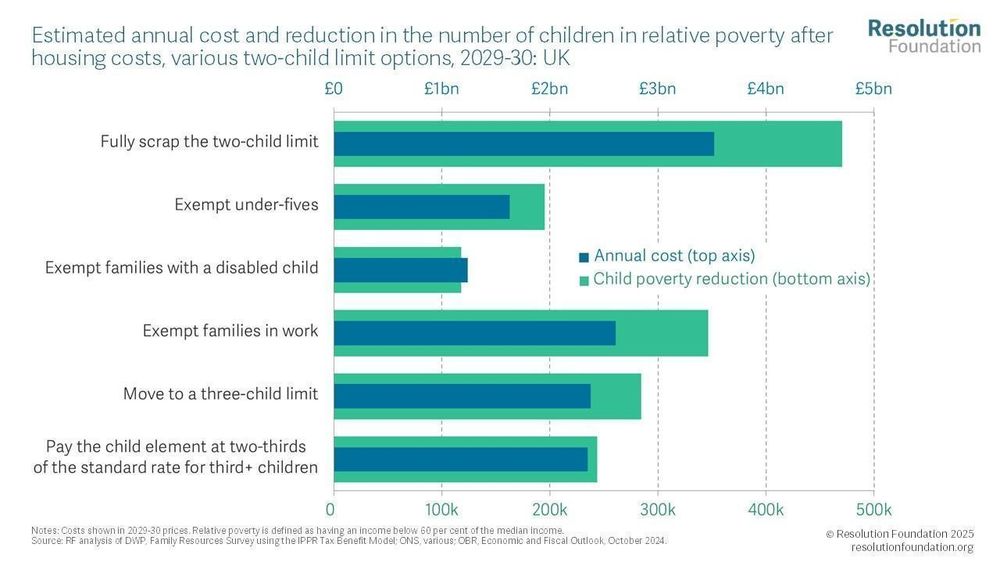
Chart showing Estimated annual cost and reduction in the number of children in relative poverty after housing costs, various two-child limit options, 2029-30: UK
The most cost-effective way to reduce child poverty is to abolish the two-child limit, which would cost £7,480 per child lifted out of poverty.
If it is not scrapped then one-in-three children will be in poverty by 2029-39, including half of children in large families 👉 buff.ly/oiV5Re2
04.08.2025 12:36 — 👍 29 🔁 18 💬 1 📌 1
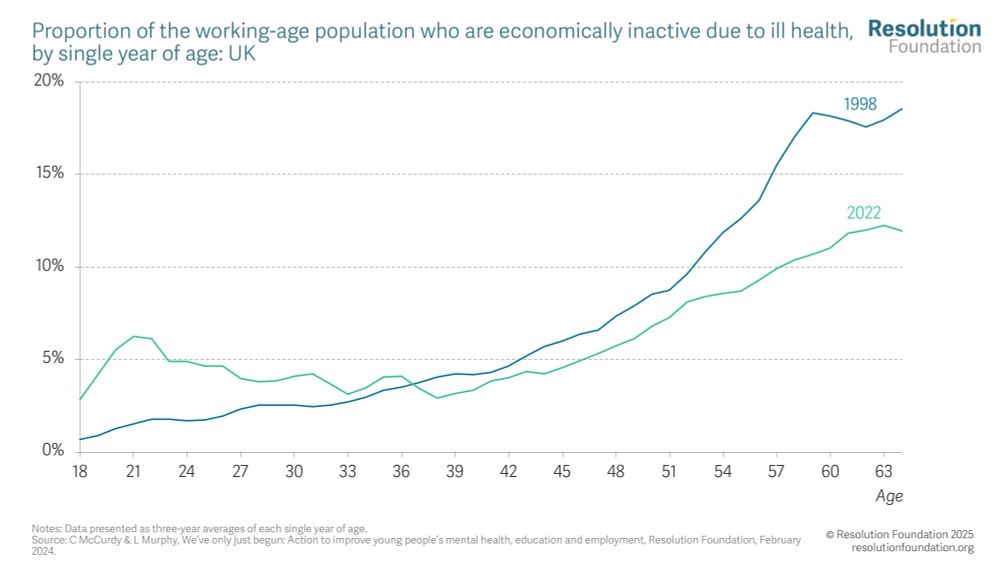
Chart showing proportion of the working-age population who are economically inactive due to ill health, by single year of age: UK
People in their early twenties are now more likely to be out of work due to ill health than those in their early forties.
Read The good, the bad and the messy here 👉 buff.ly/0O2OHhy
04.08.2025 11:10 — 👍 5 🔁 3 💬 0 📌 1
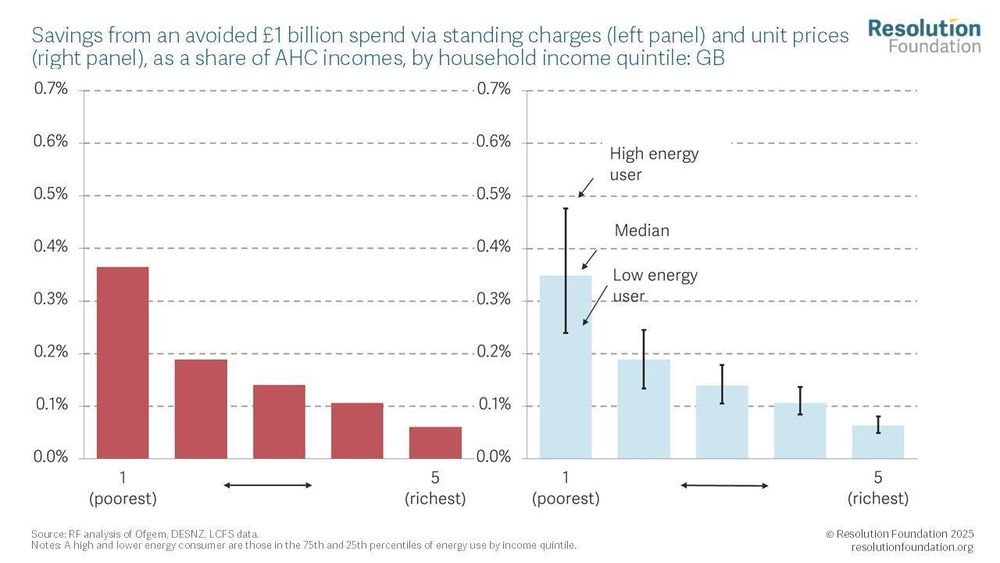
stimates suggest that varying prices across time
and space could save as much as £18 billion a year by 2040, equivalent to taking around 4
pence off the cost of a kilowatt hour of electricity, 16 per cent of current unit prices.
An efficient electricity system is materially important for living standards. Figure 2 shows,
falls in electricity prices are progressive and disproportionately benefit lower-income
households
An efficient electricity system is materially important for living standards.
Falls in electricity prices are progressive and disproportionately benefit lower-income
households.
Read more➡️ buff.ly/rpMJphF
04.08.2025 10:10 — 👍 14 🔁 2 💬 0 📌 0
Explore our interactive housing indicator charts now ⤵️ buff.ly/X5xMmnF
04.08.2025 09:09 — 👍 5 🔁 4 💬 0 📌 0
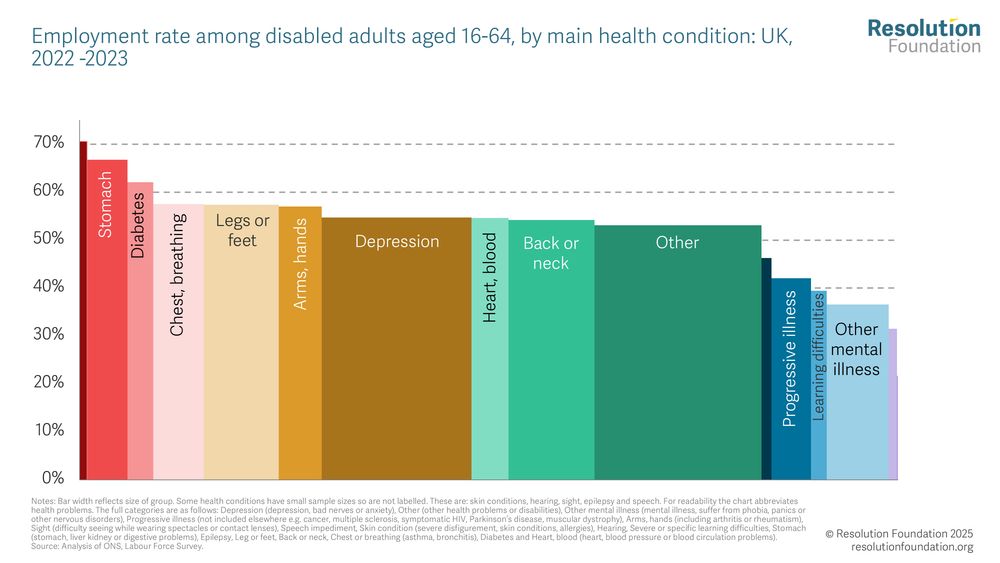
chart showing Employment rate among disabled adults aged 16-64, by main health condition: UK,
2022-2023
There is wide variation in employment rates between disabled people with different health conditions 👇
More than 3/5 of people with diabetes are in employment, but less than2/5 of people with learning difficulties or an ‘other’ mental health condition are in employment.
04.08.2025 08:15 — 👍 8 🔁 6 💬 2 📌 0
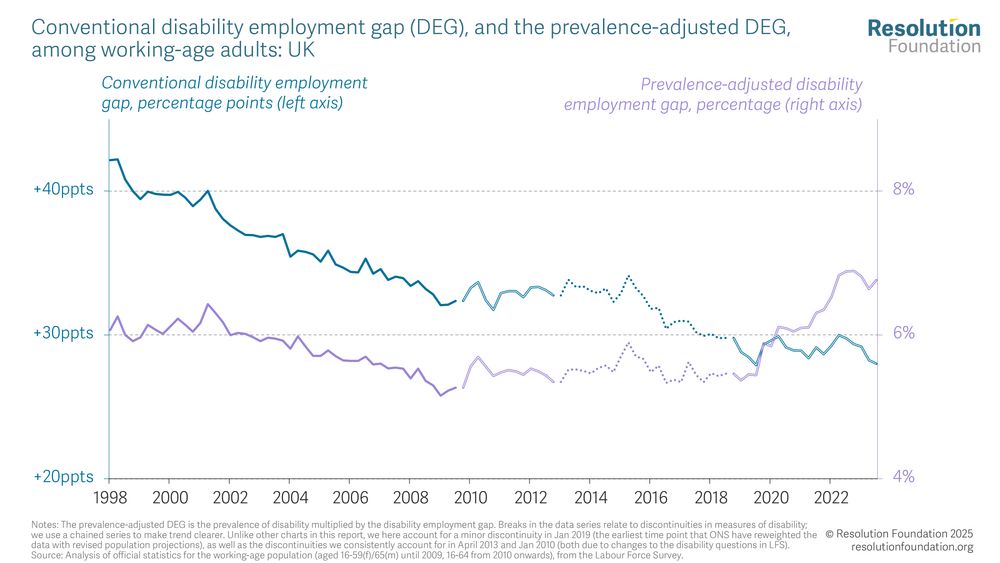
chart showing Conventional disability employment gap (DEG), and the prevalence-adjusted DEG,
among working-age adults: UK
Conventional measures of the disability employment gap can be misleading.
If we adjust for the increasing prevalence of disability, we can see that disabled people have seen a deterioration in recent years.
Read 'Opening doors' now ⤵️ buff.ly/d9KvJpj
03.08.2025 13:31 — 👍 2 🔁 1 💬 0 📌 0
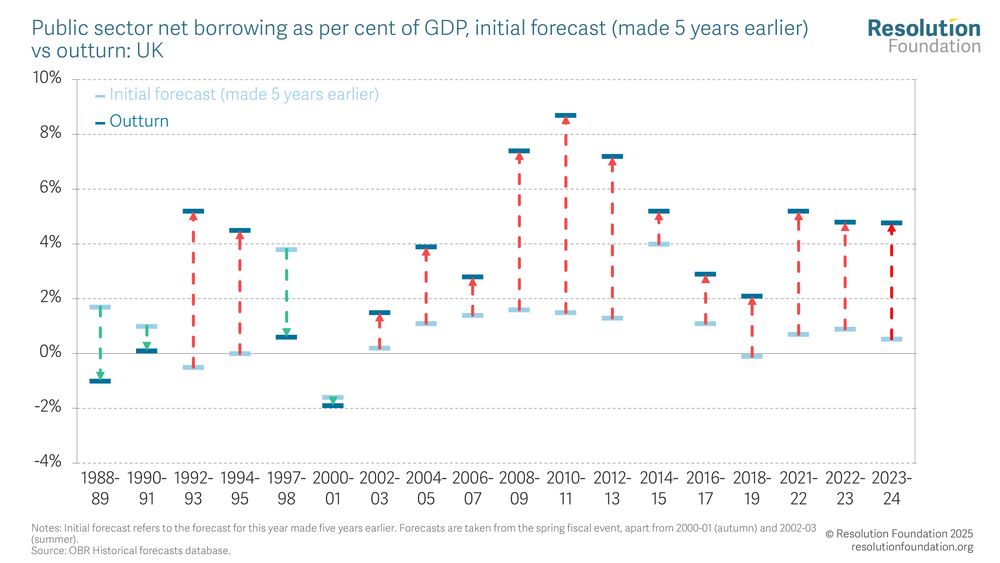
At Top of the Charts this week we've been joined by guest-editor @gilesyb.bsky.social, who's been reminiscing on better times.
COTW compares forecasts for government borrowing to the eventual outcome, showing us it's been nearly three decades since the fiscal outlook was better than expected.
03.08.2025 10:31 — 👍 3 🔁 1 💬 0 📌 0
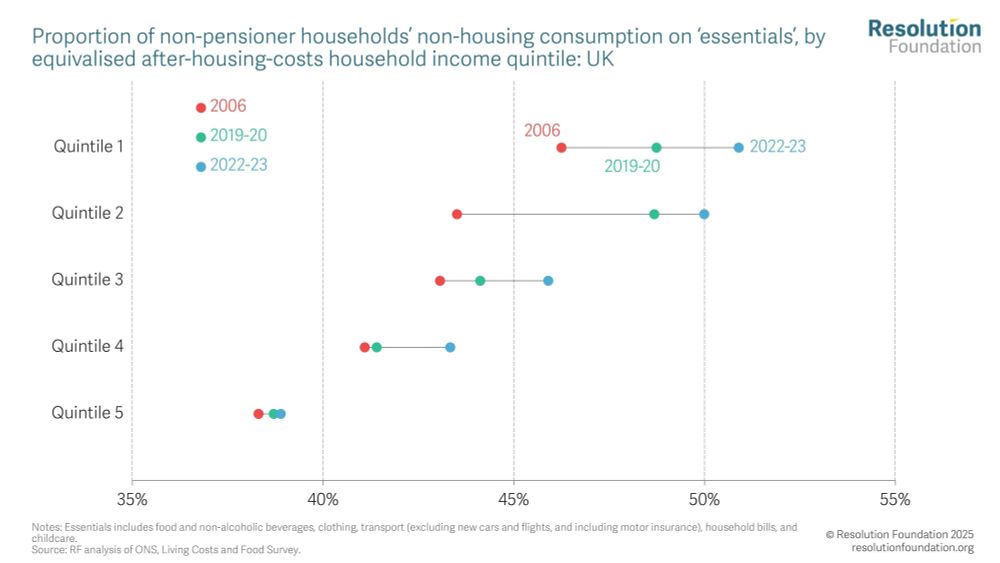
Chart showing Proportion of non-pensioner households’ non-housing consumption on ‘essentials’, by equivalised after-housing-costs household income quintile: UK
People in the bottom two-fifths of the income distribution saw the biggest rise in essentials spending between the financial crisis and the pandemic
Rising energy prices in particular have led to a ‘comfort crunch’ as families spend more of their budgets on essentials.
02.08.2025 13:30 — 👍 5 🔁 4 💬 0 📌 0
How does housing affect living standards in the UK?
As well as being most families' largest expense, the affordability, availability and quality of housing are all important.
Take a look at our indicators to find out what's happening today👇
buff.ly/8BgCmui
02.08.2025 10:30 — 👍 10 🔁 6 💬 0 📌 0
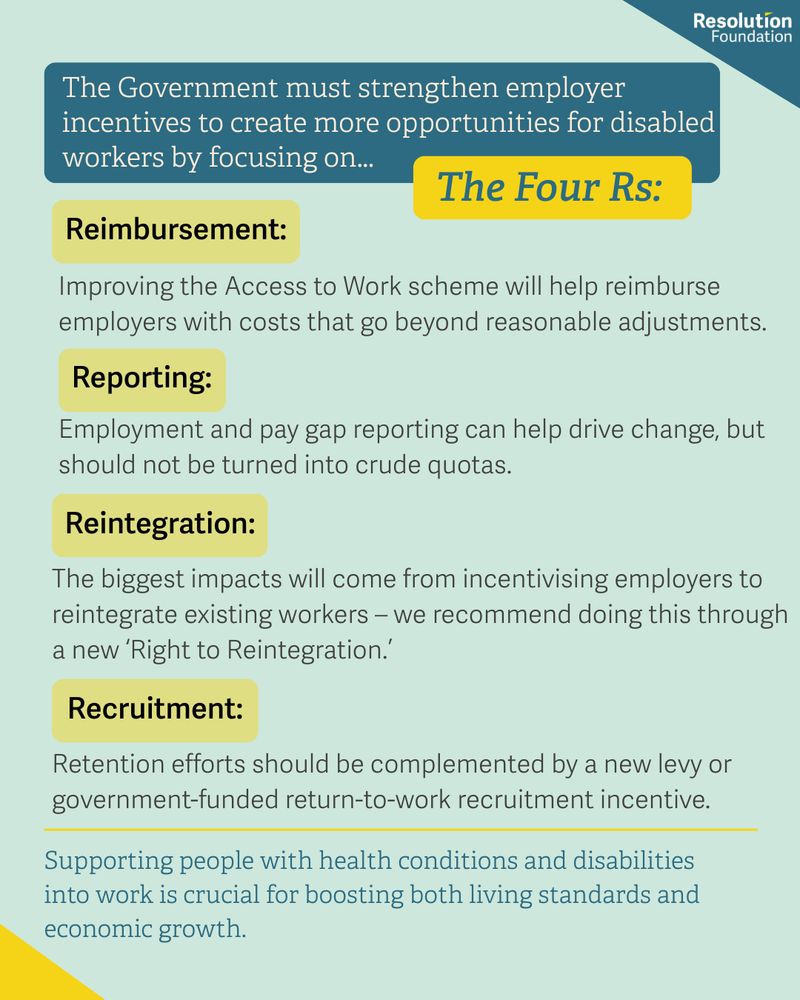
The Government must strengthen employer incentives to create more opportunities for disabled workers by focusing on the four Rs.
Reimbursement
Improving the Access to Work scheme will help reimburse employers with costs that go beyond reasonable adjustments.
Reporting
Employment and pay gap reporting can help drive change, but should not be turned into crude quotes
Reintegration
The biggest impacts will come from incentivising employers to reintegrate existing workers - we recommend doing this through a new 'Right to Reintegration'.
Recruitment
Retention efforts should be complemented by a new levy or government-funded return-to-work recruitment incentive.
Supporting people with health conditions and disabilities into work is crucial for boosting both living standards and economic growth.
How can the Government could strengthen employer incentives to create more opportunities for disabled workers?
Our latest report lays out four key things to focus on➡️ buff.ly/d9KvJpj
01.08.2025 16:02 — 👍 3 🔁 2 💬 0 📌 0
Explore our interactive housing indicator charts now ⤵️ buff.ly/2HNBbvk
01.08.2025 15:35 — 👍 1 🔁 1 💬 0 📌 0

At Top of the Charts this week we've been joined by guest-editor @gilesyb.bsky.social, who's been reminiscing on better times.
COTW compares forecasts for government borrowing to the eventual outcome, showing us it's been nearly three decades since the fiscal outlook was better than expected.
01.08.2025 14:18 — 👍 3 🔁 0 💬 0 📌 0
At our event last week, Charlie Mayfield discussed the important role of employers in enabling disabled people to stay in work.
Catch up on the full discussion here:
buff.ly/iucGe22
01.08.2025 13:34 — 👍 1 🔁 0 💬 0 📌 0
![quote from focus group ''Because I can’t work because of [my physical health condition], that can sometimes
affect the, the brain, for want of a better [word]. … Actually, if I did work, it would
actually be better for me [mentally].”
(Participant, not in paid work, with physical and mental health conditions)''](https://cdn.bsky.app/img/feed_thumbnail/plain/did:plc:v2gvr3pl2uwqxues3xqs7ycj/bafkreigrurcxjov4edtq7gsfgzp6efbpz2pc5liaj4jdneumubjutp6744@jpeg)
quote from focus group ''Because I can’t work because of [my physical health condition], that can sometimes
affect the, the brain, for want of a better [word]. … Actually, if I did work, it would
actually be better for me [mentally].”
(Participant, not in paid work, with physical and mental health conditions)''
![“[When my daughter was younger] I was working to pay for babysitters to look after her
so I could do evening meetings – which I had to do for my own mental health, actually,
because I needed to prove that I existed beyond my caring role, and prove to myself
there was light at the end of the tunnel for me still being a person when she was an
adult.”
(Participant, working part time, caring for disabled adult child)](https://cdn.bsky.app/img/feed_thumbnail/plain/did:plc:v2gvr3pl2uwqxues3xqs7ycj/bafkreiacthabzpa2k52zglbr55gagmueo4ls2qof3irnibacdcof4hzuaa@jpeg)
“[When my daughter was younger] I was working to pay for babysitters to look after her
so I could do evening meetings – which I had to do for my own mental health, actually,
because I needed to prove that I existed beyond my caring role, and prove to myself
there was light at the end of the tunnel for me still being a person when she was an
adult.”
(Participant, working part time, caring for disabled adult child)
Despite challenges, many of our focus group participants expressed a strong desire to work where possible.
In addition to the financial benefits, many value the social aspects of work, felt that it supported their well-being and mental health, and saw it as an important part of their identity.
01.08.2025 12:32 — 👍 3 🔁 0 💬 0 📌 0

Chart showing Affordable housing commitments over time, 2025-26 prices : England
How ambitious is the Government’s newly announced affordable homes programme?
It is significantly bigger than recent funding packages, and almost as big (in annual terms) as the programme announced by the last Labour government ⤵️
01.08.2025 11:31 — 👍 6 🔁 2 💬 0 📌 0
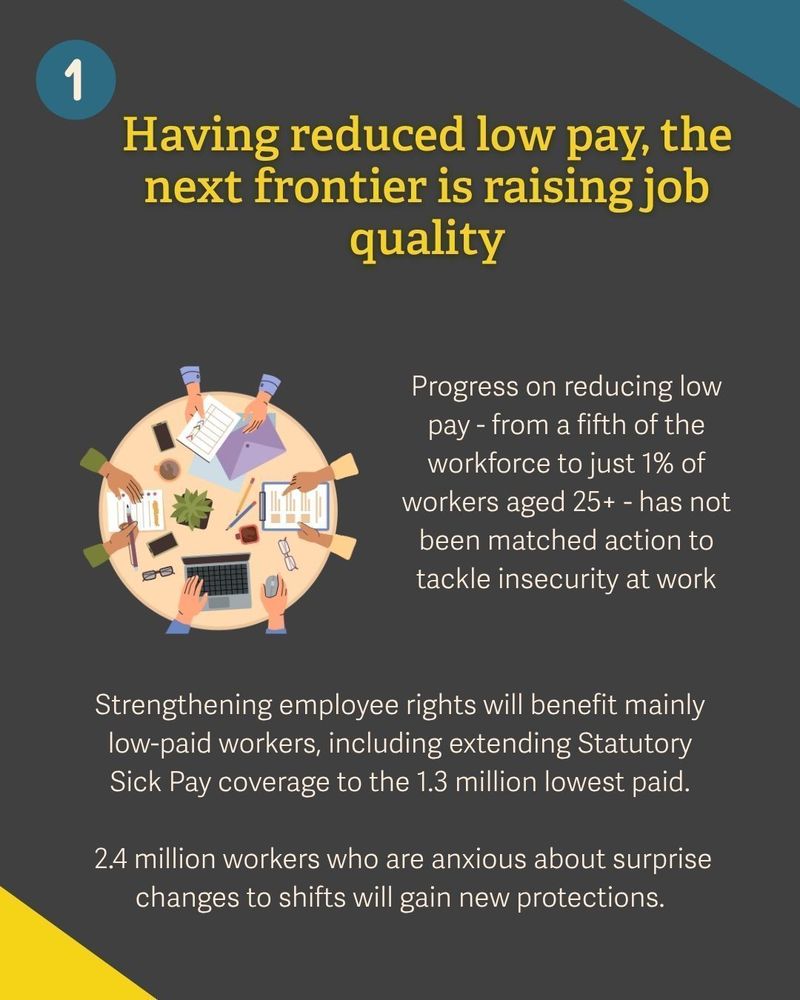
Having reduced low pay, the next frontier is raising job quality
Progress on reducing low pay - from a fifth of the workforce to just 1% of workers aged 25+ - has not been matched action to tackle insecurity at work
Strengthening employee rights will benefit mainly low-paid workers, including extending Statutory Sick Pay coverage to the 1.3 million lowest paid.
2.4 million workers who are anxious about surprise changes to shifts will gain new protections.
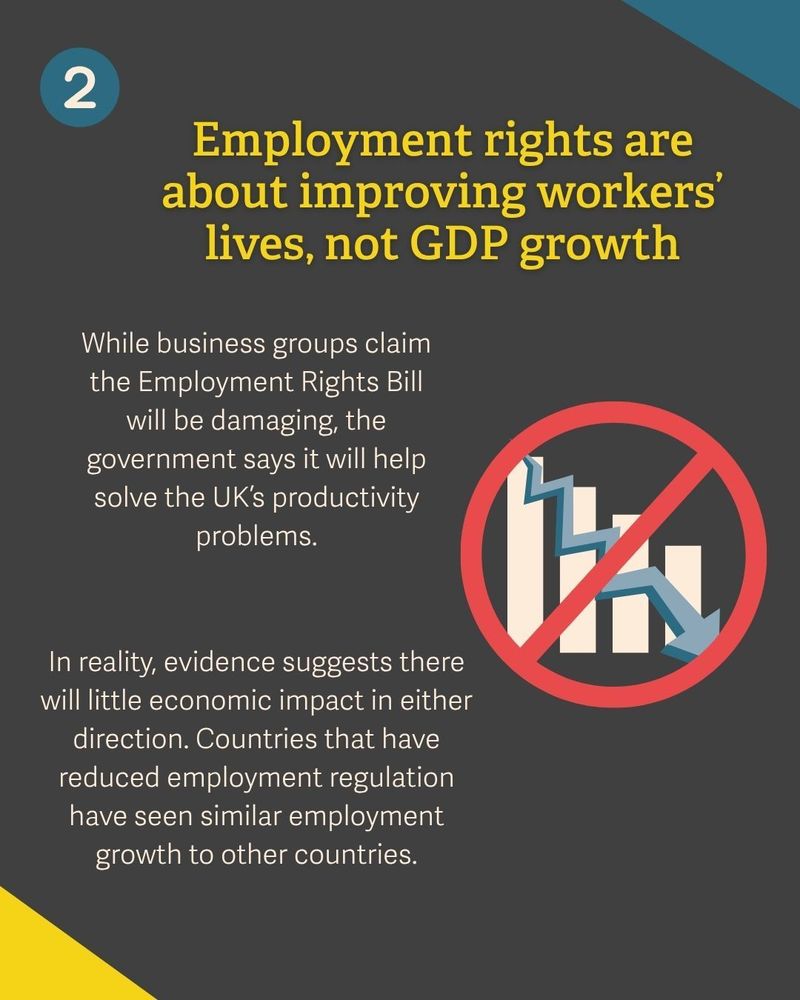
Employment rights are about improving workers’ lives, not GDP growth
While business groups claim the Employment Rights Bill will be damaging, the government says it will help solve the UK’s productivity problems.
In reality, evidence suggests there will little economic impact in either direction. Countries that have reduced employment regulation have seen similar employment growth to other countries.
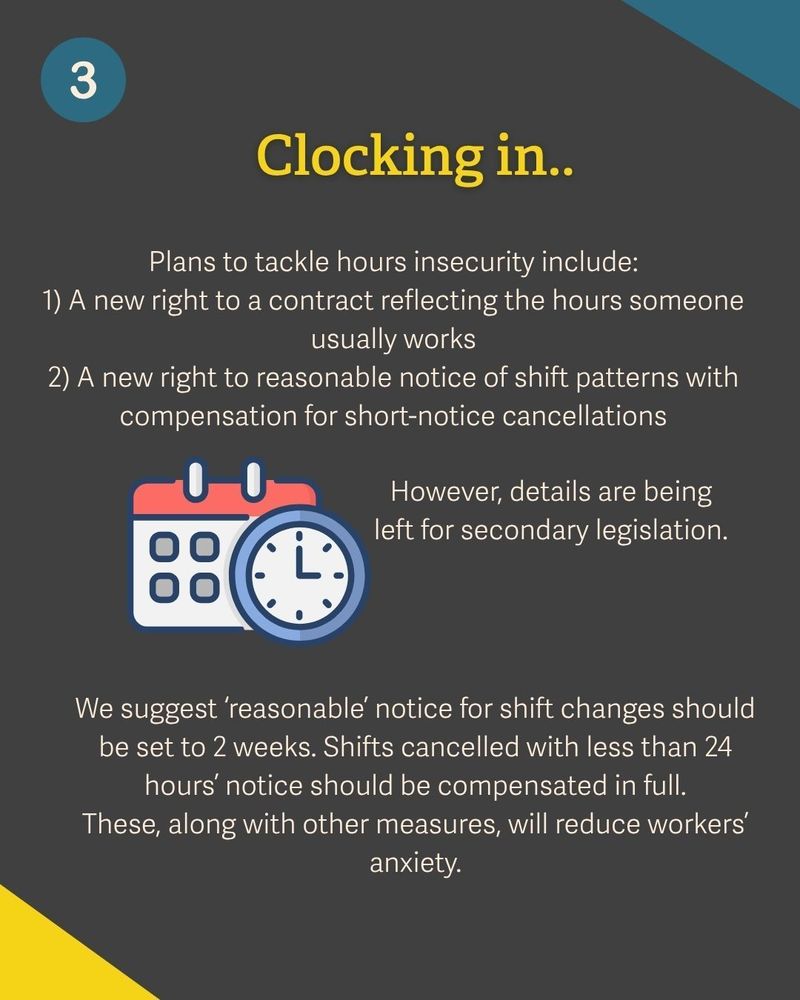
Clocking in..
Plans to tackle hours insecurity include:
1) A new right to a contract reflecting the hours someone usually works
2) A new right to reasonable notice of shift patterns with compensation for short-notice cancellations
However, details are being left for secondary legislation.
We suggest ‘reasonable’ notice for shift changes should be set to 2 weeks. Shifts cancelled with less than 24 hours’ notice should be compensated in full.
These, along with other measures, will reduce workers’ anxiety.
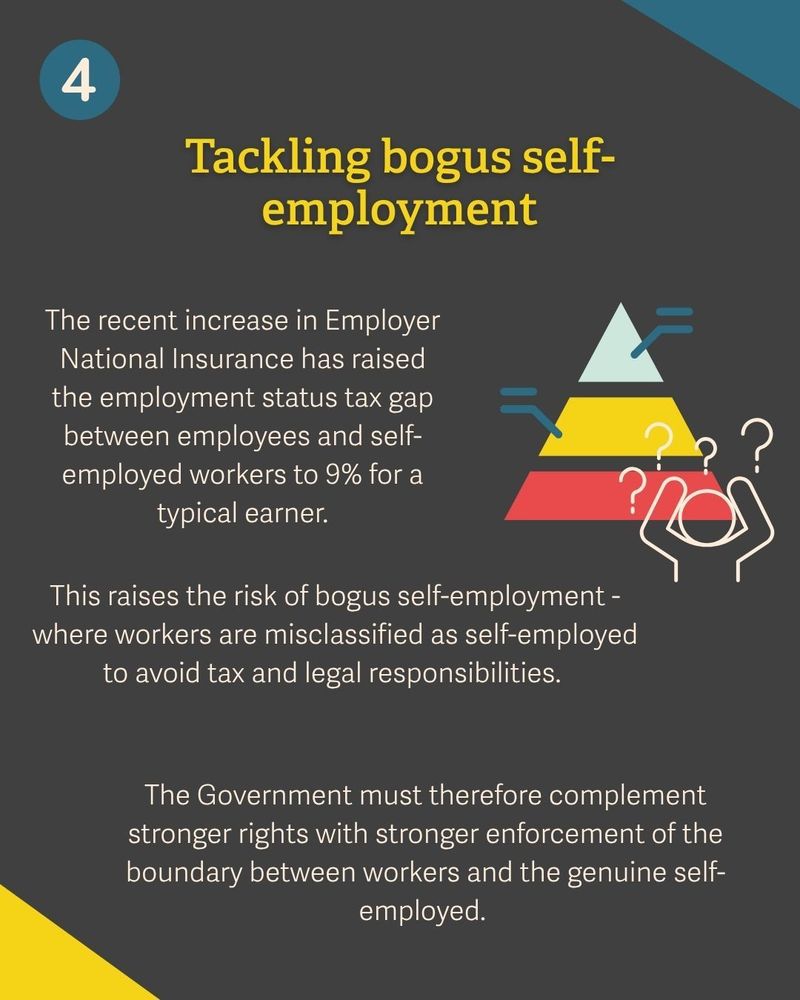
Tackling bogus self-employment
The recent increase in Employer National Insurance has raised the employment status tax gap between employees and self-employed workers to 9% for a typical earner.
This raises the risk of bogus self-employment - where workers are misclassified as self-employed to avoid tax and legal responsibilities.
The Government must therefore complement stronger rights with stronger enforcement of the boundary between workers and the genuine self-employed.
What are the impacts of the new Employment Rights Bill?
Raising job quality and tackling hours insecurity will be key. Here's what you need to know ⬇️
Get all the details our latest Low Pay Britain report: buff.ly/0OSArrI
01.08.2025 10:30 — 👍 6 🔁 0 💬 0 📌 0
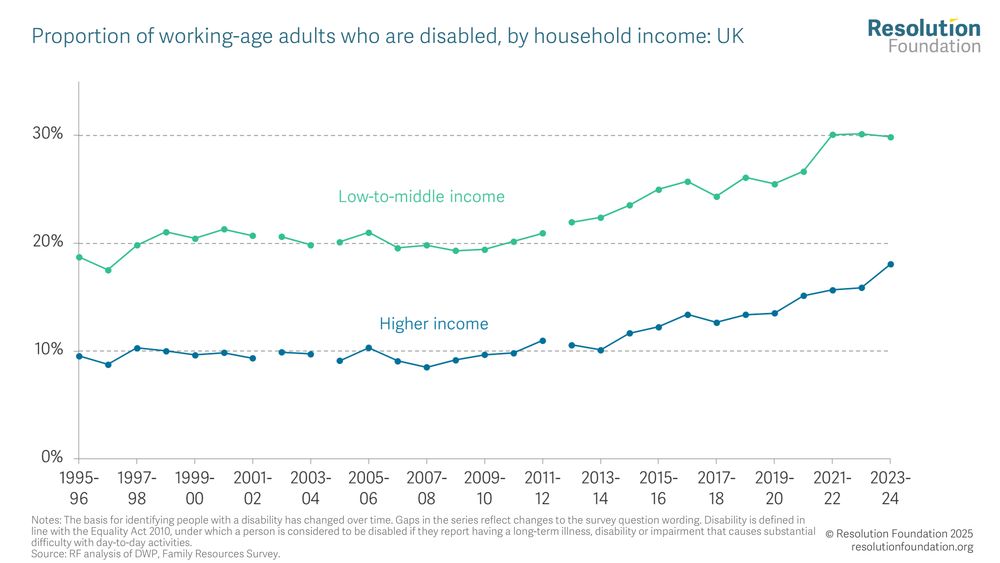
Chart showing Proportion of working-age adults who are disabled, by household income: UK.
Working-age adults in low-to-middle income families are nearly twice as likely to be
disabled as those in higher income families (30 per cent compared to 15 per cent).
Disability rates have risen by about a half in both groups over the past three decades,
rising from 19 per cent and 10 per cent respectively three decades ago (although there
have been small changes in the survey question).
Low-to-middle income adults are twice as likely to be disabled as those on higher incomes.
Read more about how disabilities and caring responsibilities impact the lives of lower-income Britain ➡️ buff.ly/kNMSUQa
01.08.2025 09:28 — 👍 7 🔁 4 💬 0 📌 0
At our event last week, Beth Kume-Holland CEO of @patchworkhub.bsky.social argued that embedding lived experience in policy making was vital for improving the experiences and outcomes of disabled people.
Catch up on the full event here:
buff.ly/iucGe22
01.08.2025 08:28 — 👍 1 🔁 1 💬 0 📌 0
What has happened to public spending over the last fifteen years?
In per person terms, resource departmental spending on health has increased, while most other areas have decreased or stayed flat.
31.07.2025 17:32 — 👍 5 🔁 2 💬 0 📌 1
Public policy research, teaching, engagement and impact, enabling the right kind of growth, fairly shared. bennettschool.cam.ac.uk
🔍 Employment solution: Helping employers attract and retain the skilled hidden talent pool 🚀 Leading the culture change in accessibility ♿️ Disability-owned
Leading care, work and family policy at the Joseph Rowntree Foundation. Previously Citizens Advice & Trussell Trust. Views always my own.
Associate Professor at @AstonBusiness. Interested in FDIs, Environmental innovation and Economic Geography. #Green. 🌲☘️
Views are my own #EconSky
web:https://sites.google.com/view/dalilaribaudo/bio
Associate Professor at Aston University
#resilience #entrepreneurship #innovation #urban #creative and #digital economies and others.
Economist at the IFS. Interested in inequality, labour markets and economic geography. Views my own.
Political editor of The Observer. Email: Rachel.sylvester@observer.co.uk
Professor of Work and Employment. Currently on secondment to the Resolution Foundation. Specialism in unions and worker voice. Promoter of social sciences. Fascinated by pretty much everything. She/her
Activist
Chief Executive of Sense
Trustee of National Council of Voluntary Organisations (NCVO)
Non Executive Director at SW London and St George’s NHS Mental Health Trust
Views my own
Director of policy, communications & external affairs Chartered Institute of Housing. Trustee Citizens Advice East Herts. Former civil servant HM Govt. Passionate about social justice and quality, affordable homes as a foundation for life.
social policy - social justice, social security, land reform, poverty, climate change, global justice, housing...and more...mostly here to listen...plus chess ♟, house plants 🪴, woodland crofts 🌲, music 🎶, and occasional macrame 🧶.
VoxEU – CEPR’s policy portal - promotes "research-based policy analysis and commentary by leading economists". VoxEU columns cover all fields of economics broadly defined and are widely read.
Economist @ resolution foundation covering jobs, demographic change and regional inequalities.
Professor at Harvard. Teaches Ec 10, some posts might be educational. Also Senior Fellow @PIIE.com & contributor
@nytopinion.nytimes.com. Was Chair of President Obama's CEA.
Economics to improve lives
www.pbe.co.uk
Economist. Deputy Director, Institute for Fiscal Studies, theifs.bsky.social
The Economic Statistics Centre of Excellence (ESCoE) is a research centre hosted at King's College London and supported by the ONS.
We provide research on economic statistics for the modern economy. 📈
From August, Provost, The Queen’s College, Oxford. Previously director, Institute for Fiscal Studies. Author “Follow the Money”



























![quote from focus group ''Because I can’t work because of [my physical health condition], that can sometimes
affect the, the brain, for want of a better [word]. … Actually, if I did work, it would
actually be better for me [mentally].”
(Participant, not in paid work, with physical and mental health conditions)''](https://cdn.bsky.app/img/feed_thumbnail/plain/did:plc:v2gvr3pl2uwqxues3xqs7ycj/bafkreigrurcxjov4edtq7gsfgzp6efbpz2pc5liaj4jdneumubjutp6744@jpeg)
![“[When my daughter was younger] I was working to pay for babysitters to look after her
so I could do evening meetings – which I had to do for my own mental health, actually,
because I needed to prove that I existed beyond my caring role, and prove to myself
there was light at the end of the tunnel for me still being a person when she was an
adult.”
(Participant, working part time, caring for disabled adult child)](https://cdn.bsky.app/img/feed_thumbnail/plain/did:plc:v2gvr3pl2uwqxues3xqs7ycj/bafkreiacthabzpa2k52zglbr55gagmueo4ls2qof3irnibacdcof4hzuaa@jpeg)







